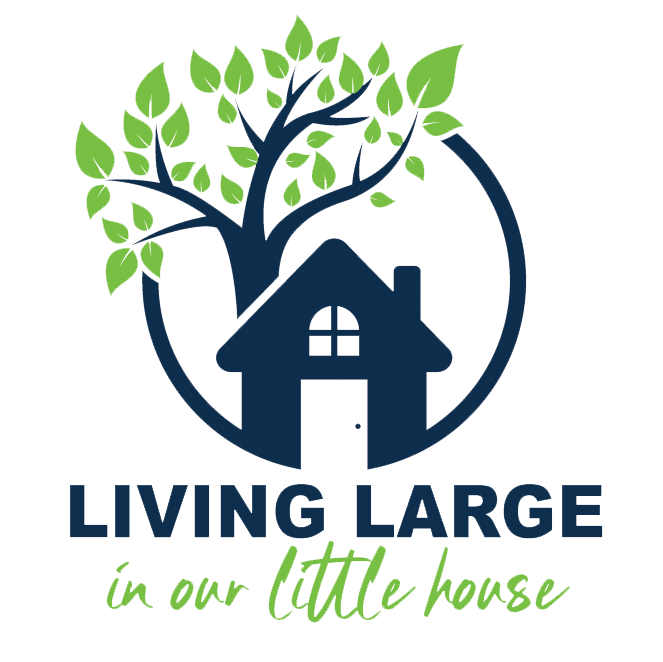Giddy at Our Little House
Giddy.
That’s the word my husband used to describe me last week when I was finally able to have DSL installed at Our Little House.
Before Thursday, it was that old dial tone, high screeching, low screeching, ultra slow dial up on which the Internet was born nearly 20 years ago.
Yes, we did know this was all that was available at Our Little House when we built more than 7 years ago. We also knew this was all that was still available when we moved here 4 years ago.
But I did figure that it would have to come, sooner rather than later. Besides, the small rural telephone company that owns a monopoly on the lines they installed in this part of Arkansas just 25 year ago, had been telling my aunt for 10 years that it would come “soon.”
I’ve been on the Internet since 1992, but to be honest, prior to last week, I’ve only ever had dial up (of course, I’ve had high speed in hotels when traveling to the big cities). By the time DSL was available even in our suburb of Kansas City, companies required a minimum two year contract and we knew we were moving, we just didn’t know when and I didn’t want to pay those fees to get out of my contract.
Anyway, when we left Kansas City, it was still possible to run my business on an ultraslow dial up connection.
How things have changed in just 4 years.
Today, I have to be able to attend webinars, view videos and post photos for slideshows and when I had to do these things, I had to go to McDonald’s in Mountain Home, 40 minutes away, to use their free wi-fi.
I had tried an AT&T air card here, but without an upgraded 3G-cell phone tower near us, it didn’t work well. Satellite didn’t seem like a viable option after hearing my other rural friends and neighbors complain about the spotty coverage and getting kicked off when they exceeded their maximum usage.
The DSL connection didn’t come easily. My aunt, who lives “next door” at ¼ mile away, moved here in 1999 and was on an ancient technology called ISDN (think of VHS vs. BETA tapes) and was the one remaining hold out who wouldn’t give it up to go back to dial up.
The phone company wanted her off of it, but she refused to go back to dial up. After telling us for years we were too far from the nearest DSL transfer station, they suddenly decided we weren’t. Of course, they just wanted her off of the ISDN.
“Yay!” She called me and told me the news. We both thought we could get it, since Our Little House is closer to the blacktop than hers.
Wrong. The telephone company tried to come up with every excuse in the book, including that it was coming in “from a different direction” than the blacktop, which is impossible, unless they’ve laid lines at the bottom of Bull Shoals Lake.
A manager finally conceded that it was costing them to run my aunt’s and they didn’t want to add Our Little House to that expense.
Too bad. I politely informed them that a public utility couldn’t pick and choose who received services, especially when they couldn’t prove it would cause the company a hardship to install that service. I told them to let their people in Little Rock know I would be filing a complaint with the FCC.
Magically, just as with my aunt, service was suddenly available at Our Little House.
So, what was the first thing I did when I went super-fast-compared-to-dial-up on my 256K DSL? Pay bills? Work?
Nope. I watched dancing and singing cat and dog videos and downloaded music all day.
That would be enough to make anyone Giddy.
Did you know that nearly 30 percent of Americans still do not have access to high speed Internet? Have you moved to a rural area or do you plan on it? Is this a concern for you?









We used to live in a rural area with dial up only. Then along came satellite. Better, but still had its troubles. Now? On an island in the middle of an ocean I have high speed internet. Awesome!
Isn’t it funny how that works!?
30 percent… It’s amazing what some of us take for granted. With me working from home full-time, and with my husband doing web development work at home on nights and weekends, that would probably be a deal breaker. Especially since we’re used to cable.
I would say it would, Steph. The lack of DSL here caused me a lot of angst.
So excited for you! And yay for singing cat and dancing dog videos!
Aren’t they the greatest, Jane!? Strangely addictive.
I totally understand the giddy! We had dial-up until a few years ago. Then we got DSL and it was great…until we got cable which is…fantastic! Nonetheless, DSL absolutely rocks. Enjoy the speed!
Thanks, Merr! I hate to think how long it would be before cable comes out here. 🙂
Well I supposedly have “high speed” internet access but lately it’s been soooo slow. I don’t know how I’d ever go back to DSL. Funny, when I was in high school Prodigy was just beginning to take hold and now I can’t live without my email/FB. How times have changed.
Now you’re making me feel old, Kristen. I had been out of school almost TEN years by the time I discovered Prodigy! I agree with you, I don’t know now what I would do without the Internet.
I can relate to your giddiness. When I first got a computer, I didn’t realize how slow dial-up was…at least, not until we got hi-speed service. Wow – what a difference.
That’s funny, Sheryl.
Absolutely, it is. All I can think is…the Feds have bigger fish to fry and ORDERING a telecom company to do something is pretty dicey in these days of outlandish litigation.
Don’t even get me started on what the feds are spending our hard earned money on.
Congratulations on getting DSL. Don’t you feel like a little kid with a brand new toy?
Totally! Dale asked me, “When will the ‘new’ wear off of that?”
I remember struggling with dial up. I was writing for a web site that required me to enter things in their database and I used to go do a load of laundry while waiting for each page to load! I’m so glad you’re “up to speed” now!
Oh, yes, the old multitasking while the computer downloads a 1 page PDF! 🙂 Thanks for the best wishes.
I did, in fact, know about the 30 percent figure you mention, having often been in areas in the rural south where that has proved to be the case.
I’ve found interesting situations in Ireland and Scotland, as well, where coverage might be there but especially in winter, wind and weather very often affect ability to use it. Of course, lack of internet connection availability is even more true in other areas of the world.
Actually, Kerry, I’ve seen stats that suggest that even some undeveloped countries have better Internet access than the U.S. I know most countries in Europe definitely do.
This is not to say that Panama is an undeveloped country but when I was there 8 years ago, I visited a rather remote area called Bocas del Toro which is very near Costa Rica. The town had a frontier town/wild west feeling with dirt roads, chickens running around and some charming but dilapidated wooden houses. It also had property on islands being developed by foreigners, modernish hotels, restaurants etc., so a mixed bag. But what amazed me most was the wireless high speed internet that was available over the ENTIRE region. You could bring your lap top and sit in a lonely-planet type mile long beach with not another human in sight and get a great connection!
That’s the types of stories I’ve been reading regarding other countries and their internet access, especially the ones we once considered “behind” the U.S. in technology.
We suffered with dial-up here for several years before a viable higher-speed option became available. Initially, we had TWO phone lines … no dedicated to a modem connected to just ONE computer in the house. It was hard to manage with both of us working from home.
At the time we went with Wispertel(which was bought up by Sky Beam), it was the ONLY option beyond dial-up. Our local phone company finally did bring DSL into our valley, but since I kind of hate those guys … I’ve stuck with what we have … even though I hear the DSL connection is probably faster and more reliable in bad weather.
It might even be cheaper as well, Roxanne.
When I moved back home after living “away”, the phone company told me that I could only get dial-up service out here (we are rural, as well). I was pretty sure that my neighbour had “high-speed” (or what passes for hi-speed here – ha!) but it took me weeks to convince the phone company of that (we have to get our internet thru the phone company out here.) Talk about frustrating. Finally I convinced them that my neighbour had hi-speed (then they tried to tell me that it was only on his side of the road, which I also knew to be untrue) so they hooked me up. I’m not that impressed with it – we clearly need more broadband width . . . try and download anything in the evening when everyone else is online and good luck with streaming – it’s more like stuttering and jerking which makes watching tv online a marathon so I rarely do.
Do these phone companies really think we’re that stupid!? There’s one way in and one way out here. The lines only come in from one direction and yet they tried to convince me that the DSL lines, which are run in the phone lines, were “coming in from a different direction.” Not unless they laid the lines at the bottom of a 690 ft. deep lake! I wonder how many people accept these excuses so the companies do not have to run the lines? Mine stutters and starts too and watching television on 256K is still a no-go. At least though, I can get my work done!
Hi Kerri,
I have a similar situation here in Greece. We have a brand new fiber optic cable running right outside our front gate, yet the phone company won’t give me DSL for unfathomable reasons between profit margins and bureaucracy.
I can’t get 3G coverage either.
I’ve had to install a satellite system which has good coverage and speed (3MBps), but costs me 5 times as much monthly and I still have to be careful about watching too many videos so as to not exceed my download quotas…
However satellite IS a solution especially if you have a good provider and costs have dropped dramatically. 5 years ago it was so expensive I did not even contemplate it as a viable solution.
Hi, Vida, Good hearing from you! Thanks for your take on the satellite. Cost was another reason I didn’t want to do it. It is $14.95 for this DSL, it would have been over $60 for satellite. Still, I probably would have done it if the DSL hadn’t become available.
I can remember when we had DSL. Glad Cable arrived on the Outer Cape. Wish it were cheaper. Now they are talking about something called Open Cape that brings even faster Broadband out here. Not sure I need it to go that fast …
No kidding, it might make your head spin! 😉 Broadband. Now that’s a term I’ll probably get to know in about a decade! 😉
It was when we first moved in to our previous house almost six years ago. Rural being defined as five miles from a town of 20000 with broadband, dsl, and even spotty regional wifi. We got very expensive and pretty slow dsl about six months later. Believe, companies will drag out installing as long as possible if they deem profit isn’t high enough.
I know people will probably think it’s funny that I’m so excited over 256K DSL, but hey, it beats 40K dial up any day. You’re right about the companies not adding to the expense. I think what is going to have to happen is the federal government stepping in as they did with rural phone lines and electricity in the last century.
Well that’s dicey too. The way planned obsolescence rages, there’s no guarantee that any current technology would be worthwhile for the feds to invest in. Consider what they did with phone lines. Phone lines still in use TODAY! What other kind of technology has THAT kind of longevity? Even the internal combustion engine has come a long way from it’s origins.
That’s true, Mat, about the technology. I know even this DSL is woefully outdated, as is our pitiful 2G tower that powers our cell phones. In 2 years, I likely will be complaining again that I cannot do my work again. However, something is going to have to be done. What about the kids out here in rural areas with only dial up access? 30 percent is a huge number to be left behind.